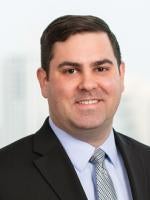In interpreting a patent license agreement originally drafted in the era of third generation (3G) cellular networks, the US Court of Appeals for the Federal Circuit found that the license agreement covered subsequent wireless network generations, affirming a district court decision that infringement claims were barred by the license agreement and the doctrine of patent exhaustion. Evolved Wireless, LLC v. HTC Corp., Case Nos. 20-1335, -1337, -1339, -1340, -1363 (Fed. Cir. Jan. 26, 2021) (Dyk, J.) However, the Court vacated-in-part the district court’s decision and remanded for findings based on supplemental evidence of the license’s termination.
In order for cellular wireless networks to work properly, each component within the network must operate according to a shared set of standards. Early generation wireless networks were specific to a particular geographic location. Subsequent “generations” became harmonized according to global standards set by international organizations. Despite some harmonization, two separate 3G standards existed, known as WCDMA and CDMA2000. The fourth generation (4G) addressed this dichotomy by harmonizing newer technologies into a single standard known as Long Term Evolution (LTE). Nonetheless, devices exist that may be compatible with one or more 3G or 4G standards. These are referred to as “single-mode” or “multi-mode” devices depending on their compatibility characteristic. Patents that cover one or more technologies necessary for standards harmonization are referred to as standard-essential patents (SEPs) and must be licensed on fair, reasonable and non-discriminatory terms.
LG Electronics developed a patent that describes a method for handing over a mobile device from one cell tower to another under the LTE standard. LG subsequently declared the patent to be essential to the LTE standard and granted a license to Qualcomm, a developer and supplier of wireless components. LG then sold the patent to TQ Lambda, which sold it to Evolved Wireless. Evolved filed infringement lawsuits against various mobile device manufacturers, all of which incorporated Qualcomm components in their accused products. Because the patent remained subject to the LG-Qualcomm license, the central question was whether the accused products fell within the scope of the license agreement.
The license agreement did not identify specific patents, but granted Qualcomm and its customers the right to use LG’s patents that are “technically or commercially necessary to make, sell, or use a ‘subscriber unit,'” defined in the license as “a Complete CDMA Telephone or a CDMA Modem Card, and any subsequent generation products.” The district court found that the accused products were covered by the license agreement and granted summary judgment in favor of the defendants under the theory that the license agreement authorized Qualcomm’s use of the patent and that the doctrine of patent exhaustion precluded an infringement action against Qualcomm’s customers (i.e., the defendants). Evolved appealed.
On appeal, Evolved argued that the accused products did not meet the definition of “subscriber units” and that it had submitted supplemental evidence that the license had been terminated that the district court had ignored. Evolved argued that that term “subsequent generation products” in the license did not include products that operate in the LTE standard, but instead only included CDMA-enabled products (i.e., 3G products) that were subsequently developed. The Federal Circuit disagreed, finding that Evolved’s interpretation ignored the established meaning of “generation” in this context. The Court concluded that the license agreement covered subsequent generation products and therefore precluded infringement for the period that it was in effect.
This did not end the inquiry, however. While the parties’ respective motions for summary judgment at the district court were pending, Evolved notified the district court that the LG-Qualcomm license was terminated by filing a “Notice of Supplemental Facts.” The Federal Circuit noted that the district court specifically asked about the termination of the license agreement during the summary judgment hearing; however, the termination did not form part of the district court’s opinion on summary judgment. Accordingly, the Court remanded for further factual findings as to the effect of the attempted termination of the license agreement.




 />i
/>i

